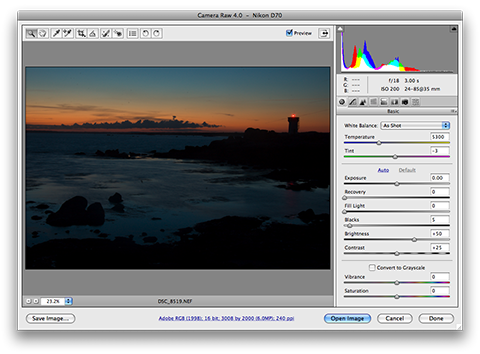Photography has been one of my hobbies for almost 30 years now and for the last four years I’ve been exclusively shooting in digital format but I’m still struggling to work out a decent workflow.  So, last Friday I took the day off work to attend a short course introducing key features of Adobe Photoshop and Lightroom (provided by my local Adult Education service and presented by David Tunnicliffe) and, at £36 for 6 hours of tuition, it was a bargain. I learnt a lot – and some people might find what follows to be a little obvious – but I’m hopething that for others it might be as useful as it was for me.
So, last Friday I took the day off work to attend a short course introducing key features of Adobe Photoshop and Lightroom (provided by my local Adult Education service and presented by David Tunnicliffe) and, at £36 for 6 hours of tuition, it was a bargain. I learnt a lot – and some people might find what follows to be a little obvious – but I’m hopething that for others it might be as useful as it was for me.
Adobe Photoshop CS3 is just one product from the Adobe Creative Suite, providing many more features than most photographers will need as it is designed for the graphics art industry in general. Even so, Photoshop CS3 includes some additional components that may be very useful for a photographer:
- Introduced with CS2, Adobe Bridge literally bridges the gap between a file browser and the various applications in the Creative Suite, providing digital asset management functionality for organising, previewing and editing images.
- Frequently updated for new proprietary raw formats, Adobe Camera Raw (ACR) provides the tools to open and edit raw image data from a digital camera. In addition to this, it can also work with JPEG and TIFF files to provide basic editing functionality without Photoshop.
In addition to the CS3 components above, there are two more products that may be of interest:
- DNG is Adobe’s non-proprietary and royalty-free Digital Negative format which is intended to provide a solution for archival of digital images and has now been embraced by many camera manufacturers – the notable exceptions being Canon and Nikon. I don’t fancy my chances of being able to open .NEF images from my Nikon D70 in 30 years time but I’ll stand a better chance if I convert them to .DNG and Adobe provides a free DNG converter for Windows and Macintosh users.
Adobe Photoshop Lightroom is a product designed by photographers, for photographers using separate library, develop, slideshow, print and web views and including the ability to import (including creating folders), catalogue (with keywords) and backup in one action.
For me, Bridge was a revelation – I use my Mac for photography (so Windows utilities were no good to me) but I’ve always found Apple iPhoto a little too simplistic. It turns out that Bridge (together with ACR) is exactly what I needed to organise my images, open them in ACR (and optionally Photoshop) to perform non-destructive edits, with the changes (and associated metadata) stored in Sidecar (.XMP) files alongside the original image (avoiding the need to maintain multiple copies of images). In addition, now that I’m using Bridge I can drop a couple of utilities that I had previously relied on:
- Renamer4Mac (for bulk file renames).
- Simple EXIF Viewer (for viewing EXIF data – but only on JPEG files).
Previously, I’d struggled to get to grips with ACR (in fact, episode 40 of This Week in Photography featured a question from me asking for some guidance) but, armed with the knowledge I gained on the course and Adobe’s understanding Adobe Photoshop Camera Raw 4 white paper, I now understand that ACR is more than just a converter and it’s often all that’s required to make many adjustments to images (the exposure control in ACR let me recover an image that had been three stops underexposed) – and that it can handle JPEG and TIFF files too.

As for Lightroom, David Tunnicliffe was very keen on the product (not surprising as he took part in its development) but, whilst I can see that its potentially useful for a professional photographer and that the ability to import, catalogue and backup images in one go would make a huge improvement to my workflow, I’m still not totally convinced by the interface. Maybe I’ll change my mind at version 3!
For those who don’t want to spend the money on Photoshop CS3 (it is very expensive if you’re not going to use it to it’s full potential) and who can manage without Bridge (which is only sold as part of Photoshop), Photoshop Elements (for Windows or Macintosh) includes enough functionality for many photographers, although some elements are hidden from the interface (find out more about the hidden elements at Richard Lynch’s site). Also, expect to see Photoshop Express become more and more useful over time. Meanwhile, ACR and the DNG converter are free downloads so they are available to Elements users too.
For me, I’m pretty sure that my new digital photography workflow will be built around Bridge and ACR and I expect to be writing some more photography-related posts as that workflow starts to come together.